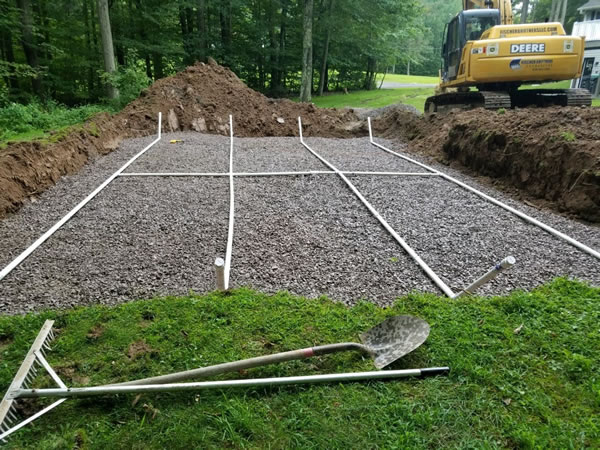When it comes to septic systems, understanding its parts and their functions is crucial for homeowners. The leach field, which is also referred to as the drainfield, is one of the most critical components.
In this blog post, our professionals from Septic Blue will delve into what a drainfield is made of and why it's essential for the efficient operation of your septic system.
The Basics of a Drainfield
A drainfield is a critical component of a septic system, as it is responsible for the dispersion of wastewater from the septic tank into the earth. This procedure entails the filtration of effluent through soil, which effectively eliminates harmful bacteria, viruses, and nutrients prior to the water reaching groundwater sources. It is beneficial to comprehend the composition of a drainfield in order to prevent the need for expensive septic tank repairs and to ensure its functionality.
Components of a Drainfield
- Perforated Pipes: A network of perforated pipes is the fundamental element of a drainfield. Small holes are typically present along the length of these pipelines, which are typically constructed from durable plastic or PVC. The pipes are laid in trenches filled with gravel or stone, allowing the effluent from the septic tank to seep out and percolate through the surrounding soil. This delayed dispersion is essential for the natural filtration process.
- Gravel or Stone: In order to ensure that the effluent is distributed uniformly, gravel or stone is positioned around the perforated pipelines. The gravel functions as a buffer, allowing the wastewater to progressively seep into the soil by providing a space for it to flow. This layer also ensures the uninterrupted flow of effluent by preventing soil particles from obstructing the perforated pipes.
- Geotextile Fabric: The gravel or stone stratum is frequently covered with a layer of geotextile fabric. This fabric obstructs the soil from accessing the gravel layer, which could result in blockages and a decrease in the drainfield's efficiency. The geotextile fabric is an essential element in the maintenance of the drainfield's longevity and the reduction of the necessity for septic tank repair.
- Soil: The soil itself plays a vital role in the drainfield. The effluent's filtering efficiency is determined by the soil's composition and condition. For example, sandy soils facilitate quicker percolation, whereas clay soils may necessitate additional preparation to guarantee proper drainage. The soil’s natural bacteria help break down any remaining organic matter in the effluent, further purifying the water before it reaches the groundwater.
Significance of Consistent Upkeep
- Septic Tank Pumping: Regular pumping is essential to prevent the buildup of solids that can overflow into the drainfield. When solids enter the drainfield, they can clog the perforated pipes and gravel, leading to system failure. A professional septic company can assist in the scheduling of routine pumping to guarantee that your system functions effectively.
- Septic tank cleaning: In addition to pumping, septic tank cleaning is necessary to remove any sludge or scum that accumulates over time. This process is essential for the breakdown of waste and maintains the equilibrium of microorganisms in the tank. The neglect of tank cleaning can lead to the necessity of more frequent repairs and even the complete replacement of the drainfield.
- Septic Tank Installation and Repair: It is imperative that the drainfield is installed correctly by a reputable septic company to guarantee that it functions properly from the outset. Premature failure and costly repairs may result from incorrect installation. Prompt repair can prevent further damage and extend the lifespan of your drainfield in the event that issues arise.
Need a Reliable Company?
Are you in need of a septic tank repair? Luckily, we at Septic Blue have dedicated workers ready at your service. Contact our representatives for more questions.
